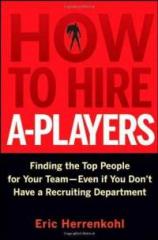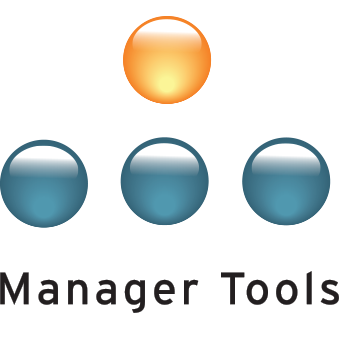
This review was submitted by jhbchina.
“How to Hire A-Players” is the hiring managers’ guide that answers the question “how do I build my bench for when I have an open requisition in my department?” Manager Tools aficionado’s all know that Mark and Mike regularly remind us of developing our ‘bench’ of potential candidates for when we have to interview. This book goes into extensive detail of how to build what the author references as your ‘farm team’ of talent to interview when you have a position open. These tips can allow you to test your interview questions on your bench after you use the “Interview Creation Tool” just released by Manager Tools.
Published in 2010, Eric Herrenkohl’s book is must read for anyone in an HR position connected to talent development and recruiting. Only two hundred pages long, every chapter of this book exceed the Manager Tools criteria of having three actionable items and it is highly practicable. Secondly, if you reverse the concepts, the ideas can help you improve your job search as well.
“How to Hire A-Players” first key point is that to hire A-Players you have to define the behavior and achievements that make an A-Player for your company and the positions within your department. You can probably use the “Interview Creation Tool” to help you define your A-Player profile.
From here the author then moves on to how to create a culture within your department and company of building your “farm team” of talent for future interviews. In our Manager Tools world, Mark and Mike would call this our bench. The author notes that the more you and your team start building your farm team the easier it will be to hire an A-Player when a position opens in your department. A side effect of this culture is that it allows you to deal with poor performers more effectively. First, poor performers will not be able to keep up with the pace of the A-Players. Secondly, you eliminate the risk of not having a replacement for a poor performer when you make the decision of letting them go.
This book informs the reader of ways to build your bench from all aspects of business activities. The author makes you conscious of the fact that you can find talent for your bench from
- the web
- Toastmaster meetings
- training programs
- professional associations
- internal departments
- customers, and even clients
In fact, as I read this book, I felt like I was reading a book written by Wendii, Mike or Mark! As you read this book, you will agree that some of the ideas or concepts have already been mentioned during a podcast or two, especially the Bench Development in a Downturn podcasts.
The best way to win the war for talent is to build relationships with A-Players and compare them to other A-Players. This book helps you take the first steps towards building a bench of the best of the best employees.


